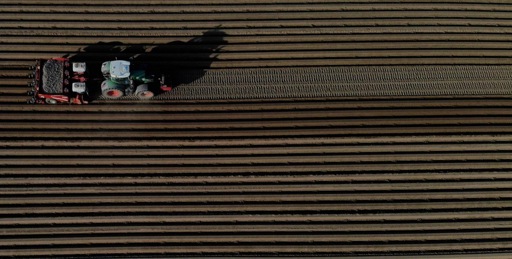The Flemish Environment Department says it will measure the size and evolution of carbon stocks in the soil for 50 years, under the soil carbon monitoring network (CMON) project.
CMON was launched in 2021 and now, after a first year of preparations, samples can be taken at approximately 2,600 locations, according to the Environment Department.
The department is participating in the project alongside the Institute for Agricultural and Food Research (ILVO) and the Institute for Nature and Forest Research (INBO).
The story of organic carbon, which plays a key role in soil quality and climate change, begins with organic material such as plant remains, compost and manure.
This organic material is broken down by organisms such as earthworms, and further broken down by bacteria and fungi, the Environment Department explains on its website. When the organic material becomes unrecognisable, it is organic matter, about half of it organic carbon.
Measurements are carried out for the soil carbon monitoring network up to a depth of one metre in soils put to different land uses, such as arable land, grassland, forests and gardens. All sites are measured every 10 years.
This shows how much organic carbon is in the soil, how much carbon has been lost or stored, and what effects changes in land use have had on the carbon stock, according to the Department.
Why is it important to know how much organic carbon our soils contain?
Stable soil with an optimal amount of organic carbon acts like a sponge. It collects water and offers resistance to compaction by heavy agricultural machinery and to erosion by rainwater runoff. In this way, the soil can resist flooding and mudslides.
If the input of organic carbon is at least as great as the output, then the soil can also help to remove CO2 from the air.

